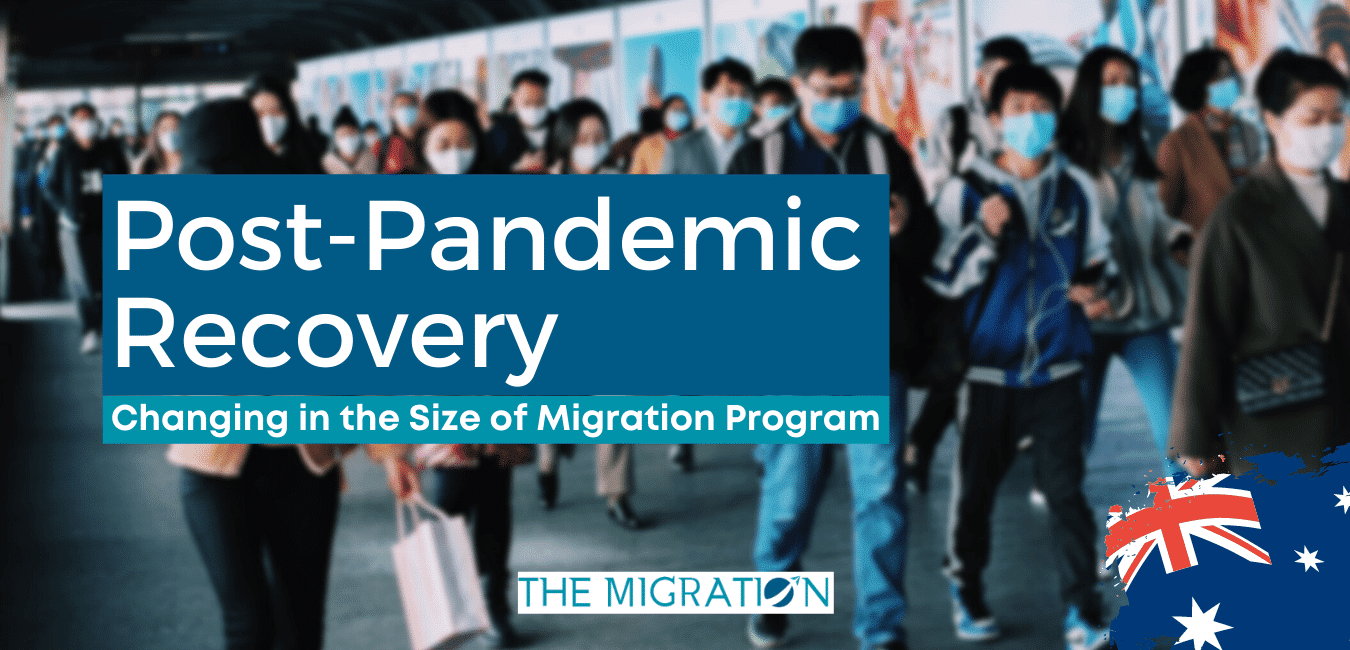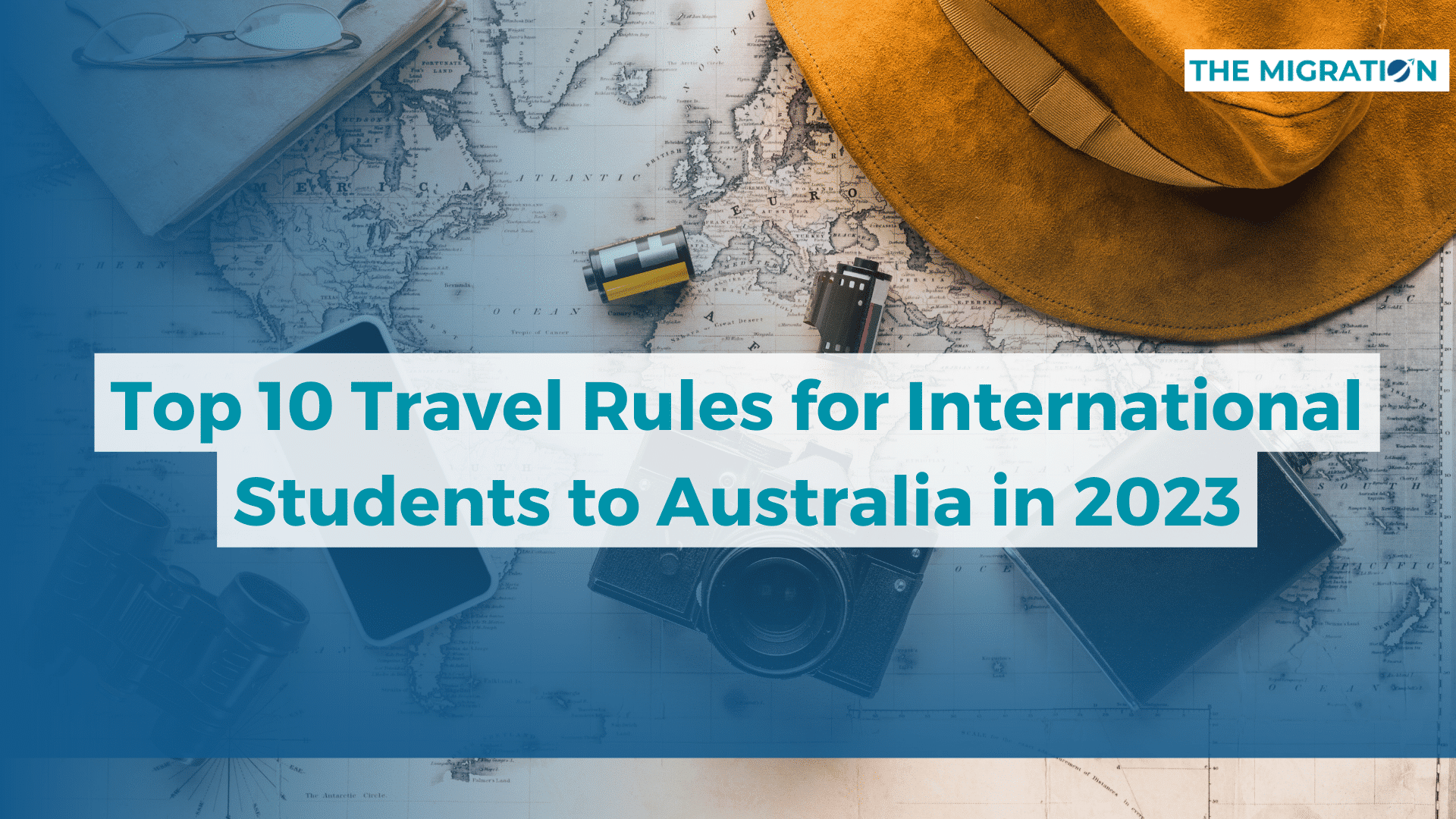The Australian Federal Government is considering changing the size and composition of the country’s migration program for the post-pandemic recovery. Despite the Covid-19 Pandemic, Australians’ living standards are still below those in other developed nations.
According to one of the world’s top rating agencies, Australia’s migration intake has been adversely affected by COVID-19. It will affect the Australian economy for years to come. Josh Frydenberg, the Australian Federal Treasurer, said that Australia was considering changing the numbers and composition of immigrants with the intention of post-pandemic recovery.
The state bureaucrats want to double Australia’s migration intake over the next five years. In the opinion of the Australian Chamber of Commerce and Industry, skilled migration should nearly double to 200,000 each year. The Premier of NSW, Dominic Perrottet, wants a “big NSW.”
Josh Frydenberg on Post-Pandemic Recovery
At a recent ACCI event, Josh Frydenberg, the federal treasurer, said that the nation is already far behind its pre-pandemic growth projections. He stated that;
“This will impact upon the economy, and including the ageing and the demographics of our population because we know that migrants tend to be of a younger age than the broader population.”
He added;
“These are obviously issues that I’m thinking through and the government is thinking through, both in terms of the size and the composition of our migration program.”
It is expected that net overseas migration will decline to minus-77,400 this year before increasing to 95,900 next year. In the last financial year, about 96,600 Australians left the country, the highest number since World War I.
About 15,700 Australians left the country in August 2021. Meanwhile, over 4900 people moved permanently to Australia. Australian immigration has been reduced from 190,000 to 160,000 for the next four years.
According to Australian Prime Minister, Scott Morrison, people from major cities have complained about dozens of clogged roads. Many cities have overcrowded trains and buses, he said. The Australian Immigration policies could be changed to increase skilled immigration or return migration numbers to pre-COVID levels.
With Canada vying for immigrants, Australia faces global competition. Canada plans to take in 1.2 million migrants over the next 3 years to address its labor shortages. These plans are being taken into consideration with the goal of post-pandemic recovery.
Premier of NSW, Dominic Perrottet
According to NSW Premier, Dominic Perrottet;
“The pause in migration has naturally resulted in a corresponding reduction in economic activity and slowing in population growth, which has been especially felt in areas that benefit from skilled migration.”
Taking up international travel and building new infrastructure will help the state’s economy, according to Dominic Perrottet. However, that’s not the only remedy. It’s a minimal step for the post-pandemic recovery of the Australian economy.
Watch Future of Australian Immigration 2021-2022 | Bright Scope of Skill Migrants for the latest updates!
Fitch Ratings Company
According to Fitch ratings, in the past four decades, Australia’s growth has been driven primarily by immigration. Australia would, however, suffer economically due to low immigration as a result of the pandemic’s shock. The decline in immigration numbers will reduce the Australian economy by more than $40 billion by 2026.
Fitch Ratings estimates that:
“The migration shock has been rapid and we think it will take years for pre-pandemic patterns to resume. This will have huge consequences on the economy, knocking near-term potential growth and building underlying wage and inflation pressure.”
Labor shortages are driving up salaries and inflation so that the Reserve Bank may raise interest rates earlier than 2024.
ACCI (Australian Chamber of Commerce and Industry)
Chamber of Commerce released a paper outlining ways to grow the Australian economy. The chamber of commerce summarizes stimulating economic growth by investing more in infrastructure in its “Bigger Australia” paper. In addition, it discusses creating a larger population and maximizing economic and demographic plans.
According to the Chamber of Commerce,
“The skills, abilities and ideas of our migrants will build upon and enhance our human and natural capital. A sustained focus on younger, more skilled migrants will counter an ageing population and the expected reduction in the tax base and competitiveness.”
ACCI is also proposing to reduce income and payroll taxes along with raising the GST tax. It’ll be possible either by increasing the rate or by extending the base.
Shadow Treasurer Jim Chalmers
In an event, Shadow Treasurer, Dr. Jim Chalmers said that labor’s policy proposals aren’t identical to ACCI’s proposals. He stated that;
“We’ve got a different view about GST, perhaps a different view about some of the issues around migration.”
“We want our economy to be more dynamic and more diverse. We want to boost business investment and build human capital, because doing all those things is the best way to get more productivity, growing wages, growing living standards and all the rest of it.”
A report released overnight by the Organization for Economic Cooperation and Development indicated that population pressure would increase as the COVID-19 pandemic recedes. Since the 1980s, Australia has relied heavily on immigration. Living standards will decline in Australia over the next decade, according to the report.
There are only 27 countries whose potential GDP per capita exceeds Australia’s among the 38 countries studied by the OECD. These countries include New Zealand, the United States, Greece, and Belgium. Nations would have to either increase taxes or reduce spending. To pay off the debt run-up caused by the pandemic, they’ll have to find new sources of revenue.
According to the OECD,
“If taxes are to rise, it might be necessary to look to other bases, such as housing, capital gains, inheritance or wealth. Recent international efforts to establish a minimum global corporate tax could also enable more revenue to be raised from corporate taxes.”
According to a Deloitte Access Economics report, the Covid-19 pandemic has placed the Australian economy at a crossroads. According to this report, Australia could choose a path of increasing sophistication, driven by new industries and new skills. This would generate long-term growth post-pandemic recovery of the Australian economy. However, if it continued in its pre-COVID ways, the economy would surely suffer.
Pradeep Philip, a Deloitte Access partner, says Australia should take actions now that will positively impact the economy in the long run. As the population ages and climate changes, there have been many structural shifts in the world.
According to Pradeep Philip;
“Australia’s economic performance has been historically strong, but our economy has also become inherently fragile.”
He added;
“We have many of the building blocks to deliver future growth and prosperity – from access to strategic minerals and renewable energy assets, to proximity to Asia and good education infrastructure.
“But with a shifting global economic and geopolitical landscape, we need a new economic lens, new tools, and new methods to address disruptions and challenges, and target the areas where tomorrow’s opportunities lie.”
Conclusion
Australia has been one of the most popular countries for immigration in the world. However, the Covid-19 Pandemic has affected Australian immigration badly. The travel restrictions on international borders have halted immigration in Australia. According to the Federal Treasurer of Australia, Josh Frydenberg, Australia is considering changing the immigrant numbers and composition for the post-pandemic recovery of its economy.
Are you a skilled worker who wants to work in Australian firms? Then you must apply for the skilled migration program. Skilled international workers may apply for the skilled migration program to obtain skilled migration visas.
While the Australian Chamber of Commerce and Industry has suggested to double the skilled migrants to 200,000 per year. Deloitte Access partner, Pradeep Philip, advised that Australia should take decisions that could help grow its economy in the long term.
Related Articles
- Skilled Migration Program Update for Offshore Applicants
- NSW is funding crisis accommodation for international students in this pandemic situation. Let’s check out its details
I’m Nasir Nawaz. I’m a registered migration consultant in Australia. I am based in Sydney. I’ve studied Master of Laws at the University of New South Wales. I’m providing immigration services for several years.
Consult with me for legal advice on Australian visas to permanently live, study, and work in Australia.











